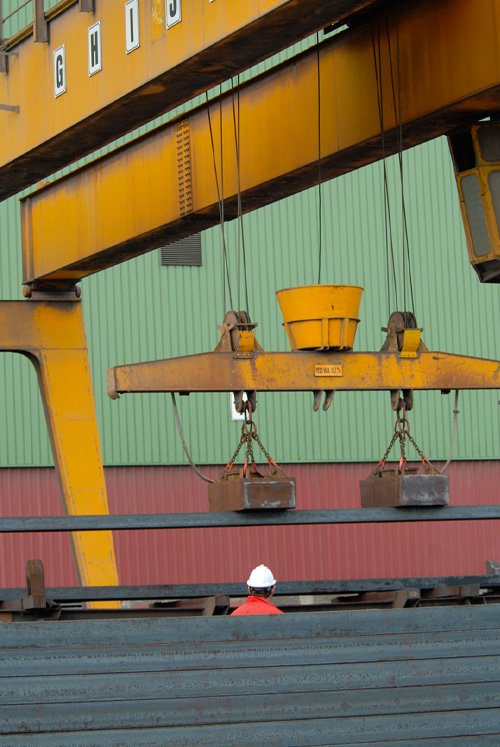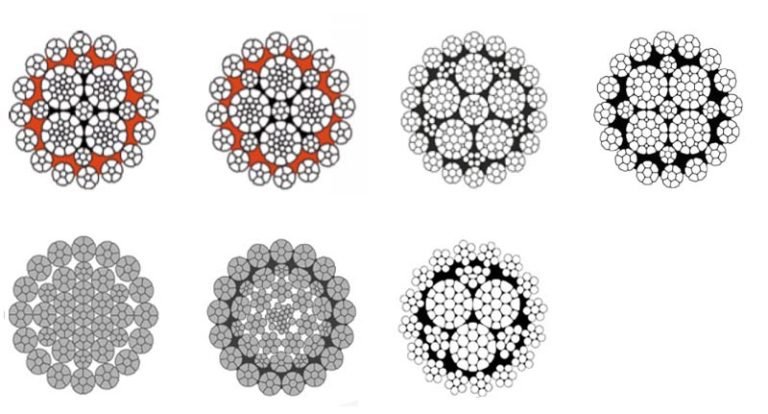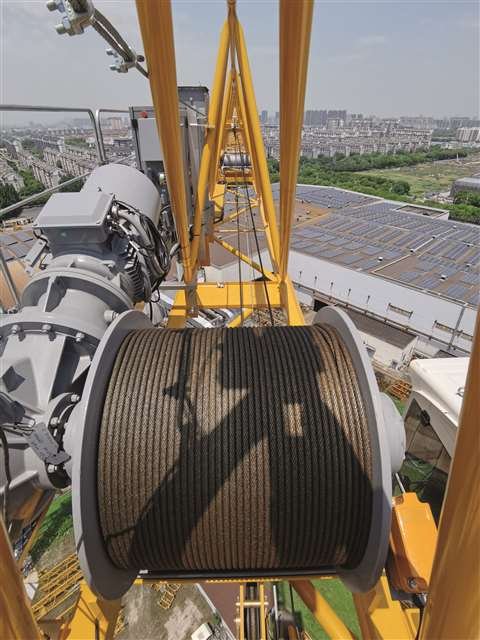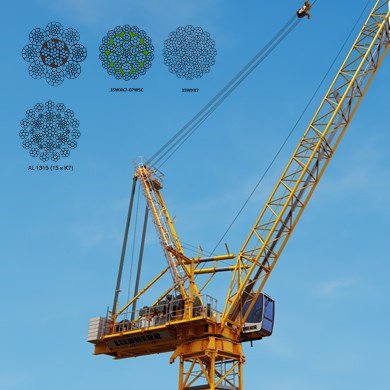Opening paragraph: Calculating the weight of a wire rope isn’t just about numbers—it impacts budgets, safety, transport, and equipment performance. Many get it wrong. Let’s simplify it.
Snippet paragraph: To calculate wire rope weight, multiply the square of the rope’s diameter (in mm) by a material constant (e.g., 0.35 for steel), and then by the length (in meters). Formula: Weight (kg) = D² × K × L.
Transition paragraph: I once underestimated the rope weight for a mining lift system. The freight carrier rejected the load. That mistake delayed the whole project and cost a lot. It taught me a lesson.
What is the basic formula for calculating wire rope weight?
Knowing the formula is the first step. But using it correctly is what really matters for your project.
Snippet: The basic formula is:
Weight (kg) = D² × K × L
where D = rope diameter in mm, K = constant based on material type, and L = rope length in meters.

Dive Deeper: Why diameter makes the biggest difference
Diameter is squared in the formula, which means even small increases lead to big weight changes. For example:
| Diameter (mm) | D² | K (Steel) | Length (m) | Weight (kg) |
|---|---|---|---|---|
| 6 | 36 | 0.35 | 100 | 1,260 |
| 10 | 100 | 0.35 | 100 | 3,500 |
| 20 | 400 | 0.35 | 100 | 14,000 |
So, going from 10mm to 20mm doesn’t double the weight—it quadruples it.
Additionally, the K constant changes based on the rope’s construction and materials. Stainless steel and plastic coatings increase the K factor.
How do rope material and construction affect the weight?
Not all ropes are created equal. Their inner core, outer coatings, and metals all change the weight.
Snippet: Material matters most—steel, galvanized, stainless, plastic-impregnated—each has different densities. Also, fiber cores weigh less than steel cores, changing the equation significantly.
Dive Deeper: Comparing core types and coatings
| Composition | Approx. K value | Notes |
|---|---|---|
| Steel core | 0.34 – 0.36 | Stronger, heavier |
| Fiber core | 0.28 – 0.30 | Lighter, less durable |
| Galvanized coating | +3–5% | Resists rust, adds slight weight |
| Plastic impregnated | +1–3% | Improves toughness |
| Stainless steel | 0.45 approx. | Heavy and corrosion-resistant |
A 12mm rope with a steel core and galvanized coating might weigh 10% more than the same rope with a fiber core and no coating.
Does rope construction type change the unit weight?
More strands and wires usually make a rope more flexible, but how does that affect the weight?
Snippet: Yes. For example, 6×37 ropes with finer wires may be denser and slightly heavier than 6×19 ropes, depending on how tightly packed the strands are.
Dive Deeper: Strand numbers, fill factor, and how they count

Fill factor reflects how compact a rope is. The tighter the wires are packed, the heavier it gets. Let’s look at examples:
| Rope Type | Strand Design | Approx. Weight (kg/100m) | Fill Factor |
|---|---|---|---|
| 6×19 FC | Fewer, thicker wires | 535 | Low |
| 6×37 IWRC | More, thinner wires | 620 | Higher |
| 8×25 Seale | Medium wires | 595 | Medium |
So, a 6×19 with a fiber core is lighter than a 6×37 with a steel core, even if the diameter is the same.
Some ropes also use compacted strands. These reduce air gaps and increase density—adding weight while improving strength and surface contact.
How do length and unit conversions affect accuracy?
Even small conversion mistakes could cause big logistical errors in shipping or lifting setups.
Snippet: Always keep units consistent. Millimeters for diameter, meters for length, and kilograms for weight. Use charts or calculators if necessary to avoid mistakes.
Dive Deeper: Avoiding conversion errors
A few common errors I often see (I made some earlier too):
- Mixing mm and inches:
Example: 1 inch = 25.4mm. Using 1” instead of 25.4mm underestimates weight by 80%! - Length confusion:
Meters aren’t feet. 100 feet = 30.48m. That difference scales dramatically. - Misreading diameter as radius:
Remember the formula squares the diameter, not radius. Don’t halve the number before calculating. - Rounding too early:
Don’t round the K constant (e.g., 0.353 as 0.35) unless accuracy isn’t critical. For precise setups like elevators, it matters.
How can I estimate wire rope weight without a calculator?
If you don’t have a calculator handy, having quick estimation tricks helps.
Snippet: Use quick reference multipliers for common rope sizes and materials. Some companies offer look-up tables or even apps that automatically calculate based on a few inputs.
Dive Deeper: Simple chart for fast estimation
Use this table for quick weight estimates per 100 meters:
| Diameter (mm) | Steel Core (kg) | Fiber Core (kg) | Stainless Steel (kg) |
|---|---|---|---|
| 6 | 250 | 200 | 290 |
| 8 | 450 | 385 | 525 |
| 10 | 700 | 600 | 860 |
| 12 | 1000 | 870 | 1,200 |
| 16 | 1,800 | 1,520 | 2,150 |
| 20 | 2,800 | 2,300 | 3,350 |
These estimates don’t factor in coatings or compacting, but they give a close starting point.
Apps make it even easier. I’ve used engineering tools like “Rope Calc” on mobile, and our own custom Excel calculators when quoting customers.
What happens when you miscalculate wire rope weight?
Underestimating weight has real consequences—from snapped hoists to rejected shipments.
Snippet: Too little weight makes projects unsafe; too much hurts freight budgets. Carriers may reject loads over-rated limits. Always confirm total rope load before dispatch or installation.
Dive Deeper: Risk and cost examples
- Logistics: I once quoted a shipment at 5.8 tons. The port weighbridge showed 6.4 tons due to steel core and plastic coating. We had to rent another truck, delaying delivery.
- Lifting damage: A crane lift designed for 800kg failed when lifting a reel of 920kg galvanized wire rope—because we forgot to add the drum weight.
- Certifications: In high-regulation areas (like offshore rigs), weight documentation must match actual product specs. Mislabeling violates safety rules.
Always confirm the rope design—including coatings, core, and reel type—before quoting or lifting.
How can certifications and standards affect actual rope weight?
Certifications force manufacturers to hold strict quality tolerances. These tolerances may slightly raise weight.
Snippet: Ropes certified under EN12385 or DNV often run slightly heavier due to minimum wire fill, tighter tolerance, and galvanized or impregnated coatings.
Dive Deeper: Example—EN12385-4 compliant ropes
EN12385-4 requires:
- Minimum fill ratios
- Standardized tensile levels
- Traceable QA protocols
If you’re using certified wire rope, expect 2–8% more weight than a non-compliant product of the same diameter. For example:
| Diameter (mm) | Non-certified (kg/100m) | Certified (kg/100m) |
|---|---|---|
| 12 | 1000 | 1070 |
| 16 | 1800 | 1900 |
| 20 | 2800 | 2990 |
These differences reflect safety margins built into premium-certified products.
Conclusion
Accurate wire rope weight calculation depends on diameter, construction, material, and standard. Even small errors lead to big problems. Learn the formula, check real-world specs, and double-check your math.








